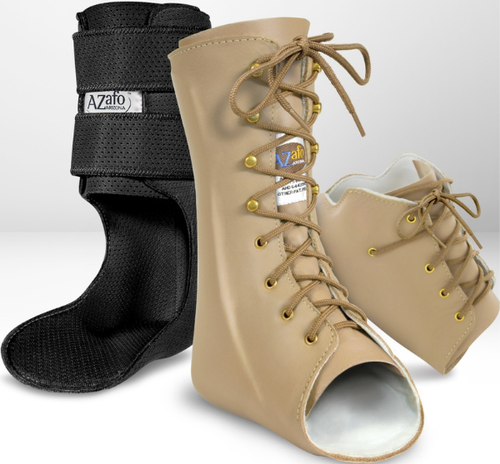Having dry feet can range anywhere from a mild, rough nuisance to a cracked and painful condition. Either way, it is best to address the problem properly.
Relieving dry and cracked skin can not only increase your overall comfort and confidence in open-toed footwear but also help reduce the risks of infections coming in through openings and other weaknesses in your skin. It’s often much more than a cosmetic pursuit!
There are plenty of simple steps you can take to help reduce dryness and cracking in your feet. Our Diabetic foot care specialist will discuss just a few of them here that might be useful. If they don’t seem to be working for you, though, or you have any other questions or concerns about your skin health, please don’t hesitate to schedule an appointment with us for a closer look.
Also important to note: if you are living with diabetes, even small cracks in your skin can easily turn into more severe problems if not approached properly. Oru Arizona podiatrist team highly recommends reaching out to us if you have dry or cracked feet before attempting any of the measures below.
Exfoliate Your Feet
Clearing away dead skin will remove barriers between aiding your healthy skin, as well as encourage the development of more healthy skin cells.
Exfoliation should be performed moisturizing, but should never be done without first soaking your feet. Scrubbing at your feet without soaking or wetting them can make it more likely that you will damage your skin.
A general foot soak and exfoliation can consist of the following:
- Place your feet in a basin filled with lukewarm-to-warm (not hot) soapy water for up to 20 minutes.
- Once soaking is complete, use a washcloth, foot scrubber, or pumice stone to gently remove hardened or thickened skin. Do not rub at any areas intensely. You are not trying to remove everything all at once and do not want to risk breaking your skin.
- Once finished. Rinse your feet and gently pat them dry.
The type of soap you use is mainly up to you, but it is generally best to opt for mild brands with lower risks of causing aggravation to the skin. Some folks also like to include Epsom salts, a bit of vinegar, certain oils, and other additives, but make sure these will not cause your skin any irritation either if you use them.

Moisturize Daily
After you exfoliate, it is very important to moisturize. Applying moisturizer at this time can better help the skin lock in moisture and reduce the rate at which new dry skin accumulates.
If you don’t engage in daily exfoliation like what we described above, another good time to moisturize is after taking a shower, when your feet are damp and have been lightly scrubbed with a washcloth or loofah.
You do not necessarily need to invest in an expensive moisturizer for best results. In fact, the more fragrances and additives a moisturizer has, the more likely it may be to irritate and worsen dry skin. Instead, look for simpler, more natural ingredients such as:
- Plant-based kinds of butter (like shea butter)
- Plant-based oils (like coconut oil)
- Lanolin
- Urea
- Hyaluronic acid
(We know some of these might not sound like natural or milder ingredients, but trust us. Hyaluronic acid, for example, is a sugar-based substance that the body naturally produces in the skin.)
Soak in Socks Overnight
An old pair of socks can help your feet lock in moisture while you sleep!
Before going to bed, apply moisturizer to your feet. A thicker variety will likely serve you better than a thinner, runnier kind. After applying the moisturizer, you may rub some petroleum jelly on the feet as well to help lock in the moisture. Then slip on your socks and wear them overnight!
An old pair of cotton socks will work best here – something you will not mind getting affected by the greasiness of moisturizer or petroleum jelly. Make sure to clean your feet when you get up in the morning as well.
Do Not Take Steamy Showers
We are not saying to take cold showers here (unless you want to). But if you are spending a good amount of time in a steaming hot shower, it can be drawing moisture away from your feet instead of adding it in.
Reduce your water temperature to something comfortable without being overly hot, and limit the time you spend in the shower. Five minutes is good. Twenty can be overdoing it.
Wear Comfortable, Properly Fitting Shoes
Yes, shoe choices can matter when it comes to preventing dryness! Check out some of the benefits of having custom orthotic braces.
If shoes are causing too much stress or “hot spots” in areas of the feet, it can easily lead to dryness, thickening, and cracking. Make sure your shoes provide proper support and are not too tight in the toe box, midfoot, or heel. We are always happy to help you determine what footwear choices would be best for your particular needs.
Take Care of Dryness and Cracking
If your feet have been dry or cracked for the long term, or steps such as those above simply haven’t been helping, don’t just let the problem slide. It’s time to seek a professional approach to care, and Fixing Feet Institute can help you find the solutions you need.




